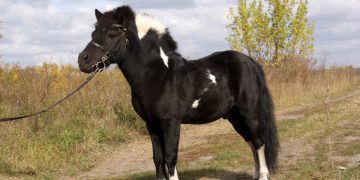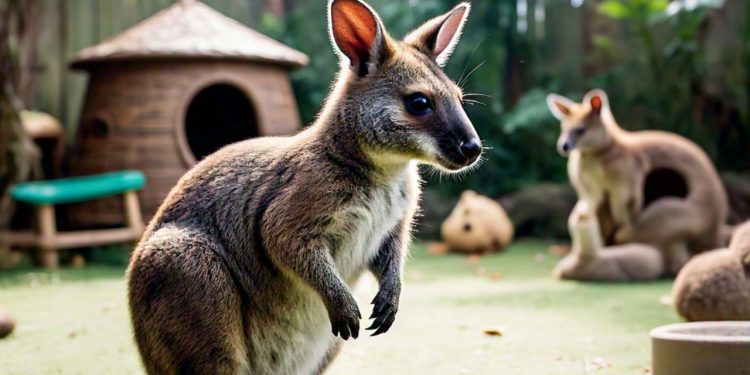Wallabies, the smaller relatives of kangaroos, are gaining popularity in the exotic animal trade due to their unique appearance, manageable size, and fascinating behaviors. As a niche market, wallaby breeding presents a lucrative business opportunity for those willing to invest time, effort, and resources. This comprehensive guide will walk you through everything you need to know to start and grow a successful wallaby breeding business, from understanding the species to marketing your venture.
What Are Wallabies?
Wallabies belong to the family Macropodidae, which also includes kangaroos and pademelons. Native to Australia, Tasmania, and nearby islands, wallabies are herbivorous marsupials that thrive in a variety of habitats, from grasslands to forests.
Types of Wallabies for Breeding
- Bennetts Wallaby (Macropus rufogriseus): Also known as the red-necked wallaby, this is one of the most commonly bred species due to its adaptability and manageable size.
- Swamp Wallaby (Wallabia bicolor): Known for its dark fur and distinctive features.
- Rock Wallaby (Petrogale spp.): Prefers rugged terrain and requires specialized enclosures.
Why Breeding Wallabies is Profitable
Wallabies are in demand for several reasons, making them a viable option for an exotic animal business:
- Exotic Pet Owners: Many people seek wallabies for their novelty and low maintenance compared to other exotic animals.
- Zoos and Wildlife Parks: Institutions acquire wallabies for educational and conservation purposes.
- Export Opportunities: International markets, particularly in countries with a growing interest in exotic pets, can provide additional revenue streams.
Step 1: Research and Planning
Understand Wallaby Care
Wallabies have unique dietary, environmental, and social needs. Educating yourself about their behavior and physiology is crucial.
- Lifespan: Wallabies live 12-15 years in captivity.
- Activity: They are crepuscular, meaning they are most active during dawn and dusk.
Know Your Market
- Identify potential buyers, such as pet owners, zoos, or breeders.
- Research pricing in your region; wallabies typically sell for $2,000 to $10,000 each, depending on species and age.
Legal Requirements
- Permits and Licenses: Exotic animal permits are often required to breed, own, and sell wallabies. Check local, state, and federal regulations.
- Zoning Laws: Ensure your property complies with zoning laws for exotic animal breeding.
- CITES Compliance: If exporting wallabies, adhere to the Convention on International Trade in Endangered Species regulations.
Step 2: Setting Up Your Facility
Creating a safe, spacious, and enriching environment is essential for wallaby breeding success.
Enclosure Design
- Size: Each wallaby should have at least 1,000-2,000 square feet of outdoor space.
- Fencing: Use secure fencing at least 5-6 feet high, as wallabies can jump considerable heights.
- Shelter: Provide shaded areas and insulated shelters to protect against extreme weather.
Environmental Conditions
- Maintain a temperature range of 60-80°F.
- Include grassy areas and natural vegetation for grazing.
Enrichment
- Add logs, climbing structures, and open spaces for hopping.
- Rotate toys and food placement to encourage natural foraging behaviors.
Step 3: Feeding and Nutrition
Wallabies are herbivores that primarily graze on grasses and shrubs. A balanced diet in captivity includes:
- Fresh Grasses and Hay: The primary component of their diet.
- Vegetables: Carrots, sweet potatoes, and leafy greens.
- Pelleted Feed: Specially formulated wallaby pellets are available from exotic animal feed suppliers.
- Supplements: Provide calcium and vitamin D to prevent metabolic bone disease.
Ensure fresh water is always available, and monitor food intake to prevent obesity or malnutrition.
Step 4: Selecting Breeding Stock
Sourcing Your Wallabies
- Purchase from reputable breeders who prioritize health and genetic diversity.
- Avoid animals with signs of illness or behavioral issues.
Breeding Pairs
- Sex Ratio: A common setup is one male (boomer) to several females (flyers) to maximize productivity.
- Age for Breeding: Wallabies reach sexual maturity at around 14-24 months, depending on the species.
Step 5: Breeding Process
Mating and Gestation
- Wallabies breed year-round, but seasonal variations may occur depending on the species and environment.
- Gestation Period: About 30 days.
- After birth, the tiny joey crawls into the mother’s pouch, where it continues developing for 6-8 months.
Weaning and Raising Joeys
- Joeys emerge from the pouch at around 7-8 months and are weaned by 12 months.
- Hand-raising may be necessary in some cases, especially if the mother rejects the joey.
Step 6: Health and Veterinary Care
Preventative health care is vital to maintaining a healthy breeding stock.
Common Health Issues
- Parasites: Regular deworming is necessary.
- Metabolic Bone Disease: Ensure proper calcium and vitamin D levels.
- Injuries: Wallabies are prone to limb injuries due to their active nature.
Veterinary Support
Partner with a veterinarian experienced in exotic animals to create a health management plan. Regular check-ups and vaccinations are essential.
Step 7: Marketing Your Wallaby Breeding Business
Building a strong brand and reaching potential buyers is key to your success.
Online Presence
- Create a professional website showcasing your animals, facilities, and breeding practices.
- Use social media platforms like Instagram and Facebook to share photos and videos.
Networking
- Attend exotic animal expos and trade shows.
- Build relationships with zoos, sanctuaries, and other breeders.
Educational Resources
- Provide care guides and detailed information about wallaby ownership to potential buyers.
- Offer post-sale support to answer health and behavior questions.
Step 8: Financial Planning and Profitability
Initial Investment
- Breeding Stock: $2,000-$10,000 per wallaby.
- Facility Setup: $5,000-$20,000 depending on enclosure size and materials.
- Licensing and Permits: Costs vary by location.
Ongoing Costs
- Food and supplements.
- Veterinary care.
- Maintenance of enclosures.
Revenue Potential
- Wallabies can sell for $2,000-$10,000 each.
- A single female can produce 1-2 joeys per year, providing steady income.
Ethical Considerations
Animal Welfare
- Ensure your wallabies are well-cared for and have ample space to thrive.
- Avoid overbreeding, which can cause stress and health issues.
Responsible Selling
- Screen potential buyers to ensure they have the knowledge and resources to care for wallabies.
- Educate buyers about the responsibilities of exotic pet ownership.
Conservation
- Consider supporting conservation efforts to protect wild wallaby populations and their habitats.
Conclusion
Wallaby breeding for profit is a rewarding but challenging business opportunity. Success requires a deep understanding of wallaby care, legal compliance, and effective marketing strategies. By prioritizing animal welfare and ethical practices, you can build a sustainable business that meets the growing demand for these captivating marsupials.
With careful planning and dedication, your wallaby breeding venture can thrive in the exotic animal trade, bringing joy to buyers and helping ensure the continued appreciation of these unique creatures.

























